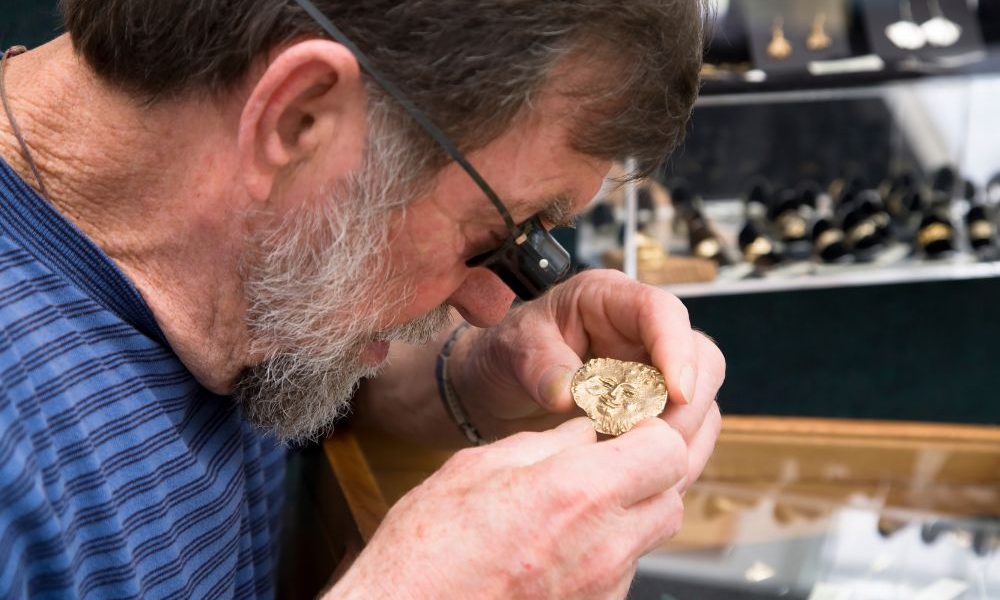Jewelry holds a special place in our hearts. Whether it’s a family heirloom, a gift from a loved one, or a piece you’ve saved up for, knowing its true value is important. A jewelry appraisal can help you understand what your jewelry is worth and why. In this article, we’ll break down the jewelry appraisal process in simple terms, helping you to grasp the essentials without any fuss.
Why Appraise Your Jewelry?
Imagine you have a beautiful ring that has been passed down in your family for generations. You cherish it, but you have no idea how much it’s worth. This is where a professional appraisal comes in handy. Deborah Villepigue, a GIA Graduate Gemologist and Accredited Jewelry Professional, says, “A professional appraisal is crucial for understanding the true value of your jewelry. It provides a detailed description of the piece, including the quality of the gemstones and metal, as well as an estimated replacement value for insurance purposes” (GIA 4Cs Blog).
An appraisal isn’t just about the monetary value; it’s also about understanding the details of your piece. This knowledge can be useful for insurance, selling, or just satisfying your curiosity.
The Appraisal Process
Getting a jewelry appraisal is straightforward. Here’s a step-by-step guide to what happens during an appraisal:
Choosing an Appraiser
Look for someone certified by a reputable organization like the American Society of Appraisers (ASA) or the National Association of Jewelry Appraisers (NAJA). Donald S. Palmieri, President of the American Society of Appraisers, emphasizes, “This ensures that the appraiser has the necessary expertise and adheres to industry standards” (American Society of Appraisers).
Initial Examination
The appraiser will first inspect your jewelry. They’ll use special tools to look at the gemstones, the metal, and any markings.
Detailed Description
The appraiser will write a detailed description of the piece. Beverly S. Gordon, a Certified Gemologist Appraiser, notes, “An appraisal should include a detailed description of the jewelry item, including the type and quality of gemstones, the metal used, any unique features, and the overall condition. It should also include an estimated replacement value based on current market prices” (International Society of Appraisers).
Market Analysis
The appraiser will then compare your piece to similar items on the market. Russell Shor, a Senior Industry Analyst at GIA, explains, “The value of a piece of jewelry can fluctuate based on market demand, the rarity of the materials used, and the craftsmanship involved. An appraisal helps you understand the current market value and make informed decisions about buying, selling, or insuring your jewelry” (Jewellery Net Asia).
Final Report
After completing their analysis, the appraiser will give you a written report. This report will include all the details about your piece and its estimated value.
Types of Appraisals
There are different types of appraisals, each serving a different purpose. Here are the most common ones:
Insurance Appraisal
This type of appraisal determines the replacement value of your jewelry. It’s what you would need to pay to replace the piece if it were lost or stolen. This is the most common type of appraisal and is often required by insurance companies.
Fair Market Value Appraisal
This appraisal is used to determine what your jewelry would sell for in the current market. It’s useful if you’re planning to sell your piece or if you need to know its value for tax purposes.
Estate Appraisal
This type is used when settling an estate. It determines the value of the jewelry as part of the overall estate.
Factors That Affect Jewelry Value
Several factors influence the value of your jewelry. Understanding these can help you appreciate why certain pieces are worth more than others.
Gemstone Quality
The quality of the gemstones in your jewelry significantly affects its value. Gemstones are graded based on the four Cs: cut, color, clarity, and carat weight.
Metal Type and Purity
The type of metal (gold, silver, platinum) and its purity (measured in karats) also play a crucial role. Higher purity metals are usually more valuable.
Craftsmanship
The skill and artistry involved in creating the piece can add to its value. Intricate designs and well-made settings are typically worth more.
Age and Rarity
Older and rare pieces can be very valuable, especially if they have historical significance or come from a famous designer.
Condition
Jewelry in good condition is worth more than pieces that are damaged or worn.
Personal Anecdotes and Insights
Let me share a personal story. A few years ago, I inherited a beautiful necklace from my grandmother. I always admired it but had no idea of its value. I decided to get it appraised, and to my surprise, the appraiser found that it was made of 18-karat gold and featured rare gemstones. Not only did this knowledge deepen my appreciation for the necklace, but it also provided me with a sense of security knowing its true worth.
Another insight is the growing trend of online jewelry appraisals. While convenient, it’s important to be cautious. A study published in the Journal of Retailing and Consumer Services compared online appraisals to in-person ones and found that online appraisals are not always as accurate, especially for complex or valuable pieces.
How to Choose the Right Appraiser
Selecting the right appraiser is crucial. Here are a few tips:
Check Credentials
Ensure the appraiser is certified by a reputable organization. This guarantees they have the necessary training and adhere to industry standards.
Ask for References
A good appraiser should have positive reviews and references. Don’t hesitate to ask for these.
Understand the Fees
Appraisal fees can vary. Some appraisers charge a flat fee, while others charge by the hour. Make sure you understand the fee structure before proceeding.
Final Thoughts
Jewelry appraisals might seem like a complicated process, but they’re essential for understanding the true value of your pieces. Whether it’s for insurance, selling, or simply satisfying your curiosity, a professional appraisal provides a detailed and accurate valuation.
Remember, it’s not just about the monetary value. An appraisal also offers insights into the craftsmanship, history, and unique features of your jewelry. So, the next time you admire that special piece, you’ll do so with a deeper appreciation of its true worth.




